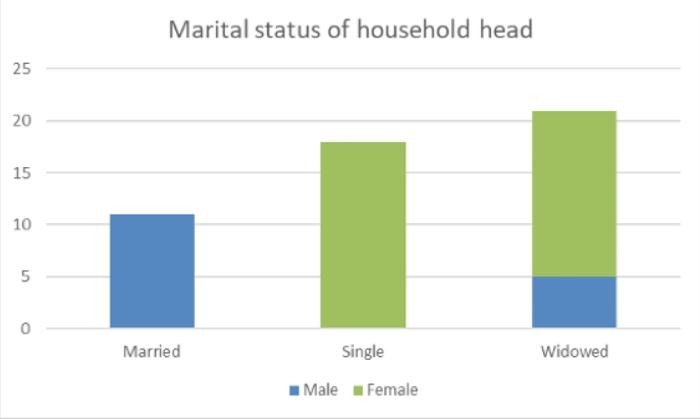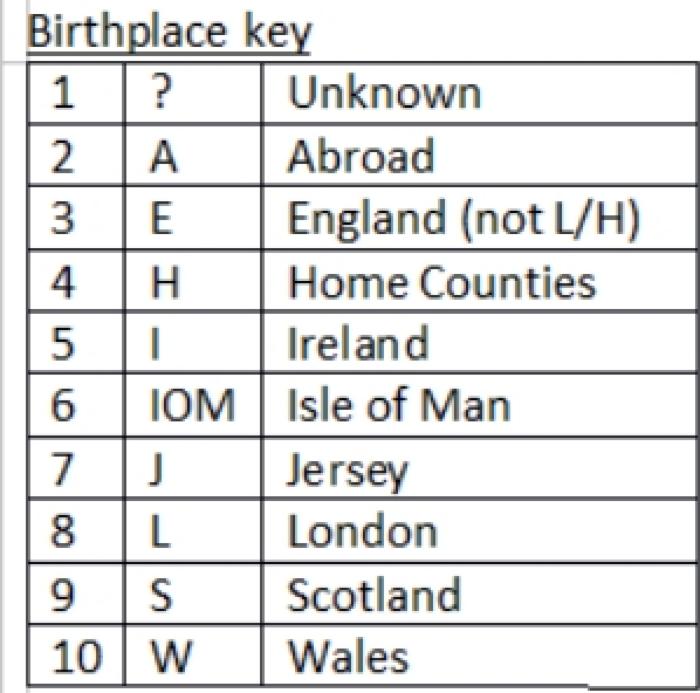THE ORCHARD
Introduction
The Orchard was somewhat different from other roads in that it had been created by Henrietta Barnett out of concern for elderly poor people of limited means who she described as for ‘poor and workworn’. She was concerned that after their working lives, they were often condemned to live in cramped tenement houses, frequently beside those who she described as “the lowest characters, often drunkards, noisy and quarrelsome”. Raymond Unwin designed a one-storey quadrangle of 57 single-roomed flats. It was agreed with other collaborators that the plan could be made to work if the capital could be raised at low interest. Henrietta Barnett wrote to many women who might be willing to help and in return for subscribing £50, they were able to nominate a tenant over the age of 60, although the final decision would remain with the landlords. The Orchard was opened in October 1909.
Nature of the properties
There were 54 flats. Although numbered 1-57, 24 and 25 were a washhouse and bathhouse and 54 was also a bathhouse. On Census night, 50 of the 54 were occupied. The Census summary booklet gives the names of Mrs Betterson at 2 (enumerated elsewhere) and Miss Burton at 3 (away from home). The unnamed occupant of 38 was ‘away’ and there is no information for 21.
It is known from descriptions of The Orchard that each dwelling was one room, with a bed recess, scullery and bath, however there was a small amount of (probably) respondent error as 3 respondents (6%) reported that their dwelling had 2 rooms.

Analysis of Occupants
There has been a perception that the early residents were female, however the census data shows that although predominantly female (49 individuals – 71% of residents) , there were a number of male residents (20 – 29%).
16 of the males were Head of Household and of these 11 were married (wife also living at The Orchard) and 5 were widowers. There were no single men. The remaining 34 units had female Heads of Household; of these 18 were single women and 16 were widows. Of the 50 households, 33 consisted of one person, 15 consisted of 2 people (usually but not exclusively married couples) whilst 2 units had 3 residents.

As would be expected given the aims of The Orchard, most of the residents were older than the average for Hampstead Garden Suburb at this time. In most roads, residents over 65 years of age are scarce or absent, but here the average age of the Head of Household is 61.3 years and 53% of residents are over 65. However, there are exceptions. Most surprising is the presence of children: Louisa Ralley (who describes herself as a widow of Private Means – although there is no evidence of a marriage anywhere in the public records) has two male children, George aged 4 and Herbert aged 5. There are two other children, Cyril Jackson aged 10, who lived at number 18 with his single mother, Clara Jackson (45) who lists her employment as ‘domestic charring’ and 1 year old Louis Arthur Harding who, with his mother Nellie Grace Harding - listed as a maternity nurse, lived with Sarah Ferguson, an OAP who was the mother of Nellie.

There were other households where a member of the extended family was present; for example, Ethel Wanstall (27) a milliner, was living with her mother (Frances Wanstall) at 10 The Orchard, Lily Bentley (Private Means) lived with her grandmother, Mary Ann Gamble at 22 The Orchard and Anne Fitzpatrick, Draper’s Assistant, was registered with her aunt, Sarah Trout at 49 The Orchard. Given the size of the units, it is not surprising that the average household size for The Orchard at 1.38 persons was the smallest in the Suburb, although this was probably also the highest ratio of people to rooms.
Not surprisingly given the size of the accommodation, there were no visitors or boarders. This, together with the socio-economic status of the residents meant there were no servants.
A small proportion of residents included details of the number of children they had/had had on their Census forms. The 1911 Census was the first one to collect this data, as it was looking for evidence of infant mortality. There is relatively little evidence of this in other Suburb roads, but of the 8 respondents giving numbers of children born alive, 5 (63%) had children who are no longer alive. This is probably an indication of socio-economic class and levels of deprivation. Given the average age of the respondents this is probably more indicative of living and medical/health conditions in the second half of the 19th century rather than at the time of the Census.
Employment
Given that Henrietta Barnett’s purpose in establishing The Orchard was to provide improved accommodation for ‘old folk’ who were ‘poor and workworn’, it is not surprising that a majority of the residents report their employment status as ‘retired’ or ‘OAP’. The Old Age Pension was a new concept at this time; the Old Age Pensions Act, 1908 provided 5 shillings (£0.25) a week for those over 70 whose annual income did not exceed £31.50. This was a considerable advance in enabling the elderly to avoid recourse to outdoor relief or the workhouse. That people did not become eligible for the Old Age Pension until 70, together with some younger residents who were presumably accommodated because they were ‘in need’ in other respects, explains why almost one third (30.4%) were undertaking some work. The oldest resident who was still undertaking some work was Amelia Scottmann who recorded herself as a Lacemaker – working from home.
Not all the retired residents gave a former employment, but where they did so there was a split between relatively genteel female occupations such as nurse (2), housekeeper (2) governess (2). The men had tended to be in both skilled and unskilled roles e.g. watchmaker, hackney carriage driver/coachman (2), blacksmith, although there was also a retired solicitor.
Of those who were still in employment, the women tended to be various domestic roles, such as seamstress (2), cleaning (4) or shop assistant. One of the younger residents was Susanna Crawford who is recorded as being blind and working as a home-based knitter. The males who were in employment tended to be in labouring or other unskilled work.
Birthplaces of Residents

The origins of the residents of The Orchard are perhaps more varied than might be expected. Typically, in the lower status roads, a high proportion of residents have been born in London. Whilst important at 34.8% (the largest group equally with England beyond the Home Counties), the proportion is lower than in most other roads. One reason for this is the very small number of children present which tends to increase the proportion of London born residents in any road. Another factor might be the lack of extended family members either at all or in London. At this time, it was still quite common for families to support older generations. The residents of the The Orchard included many single women who had never married and would have lacked extended family. Similarly, those who had migrated long distances for work opportunities might have lost touch with extended family members and a return to their birthplace might not have been an option. This would be even more likely to be the case if the original attraction of migration to London had been poverty and lack of opportunity at the origin. 13% of residents came from Ireland, Scotland and Wales; this is more than many other roads. Many of those who had come from areas beyond London seem to have come from rural areas in counties which would have been predominantly rural such as Suffolk, Somerset, Devon etc where there would have been few opportunities for female employment and an incentive to migrate to large cities like London.
Kate Webster